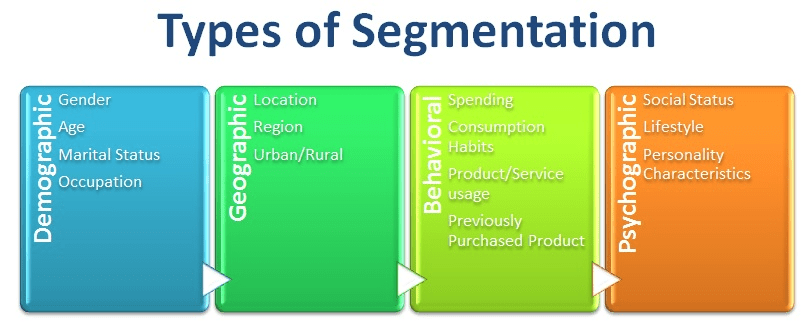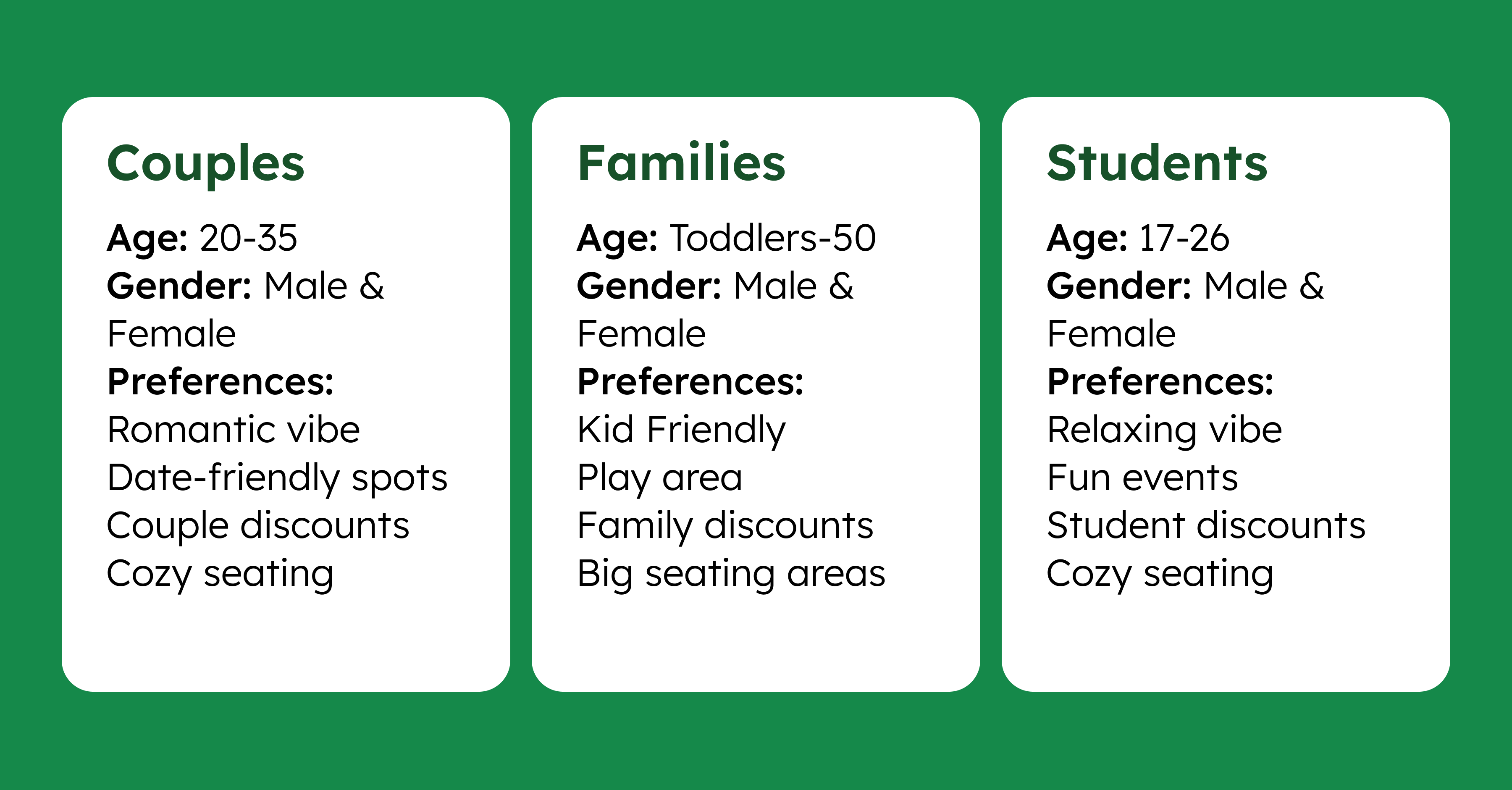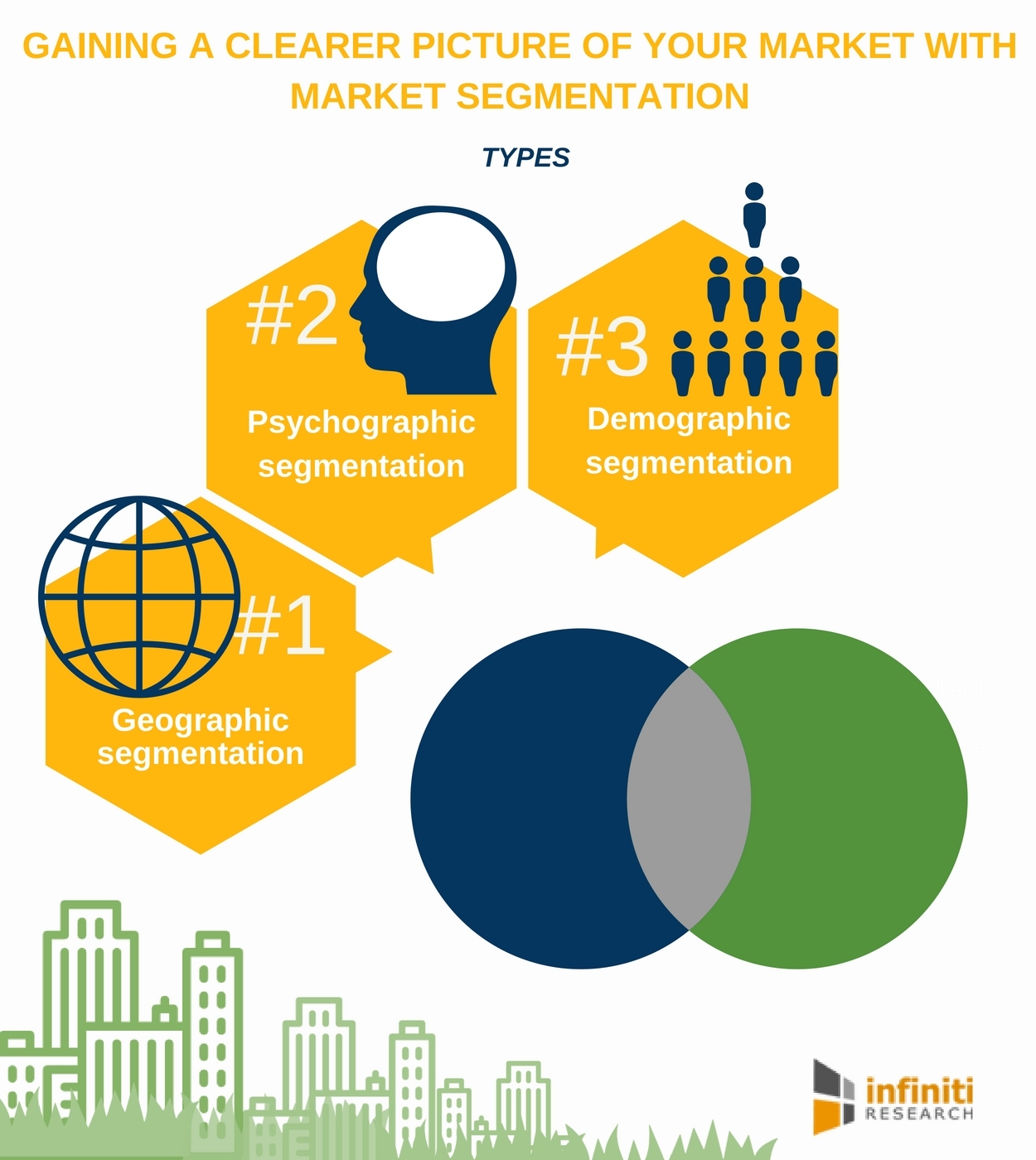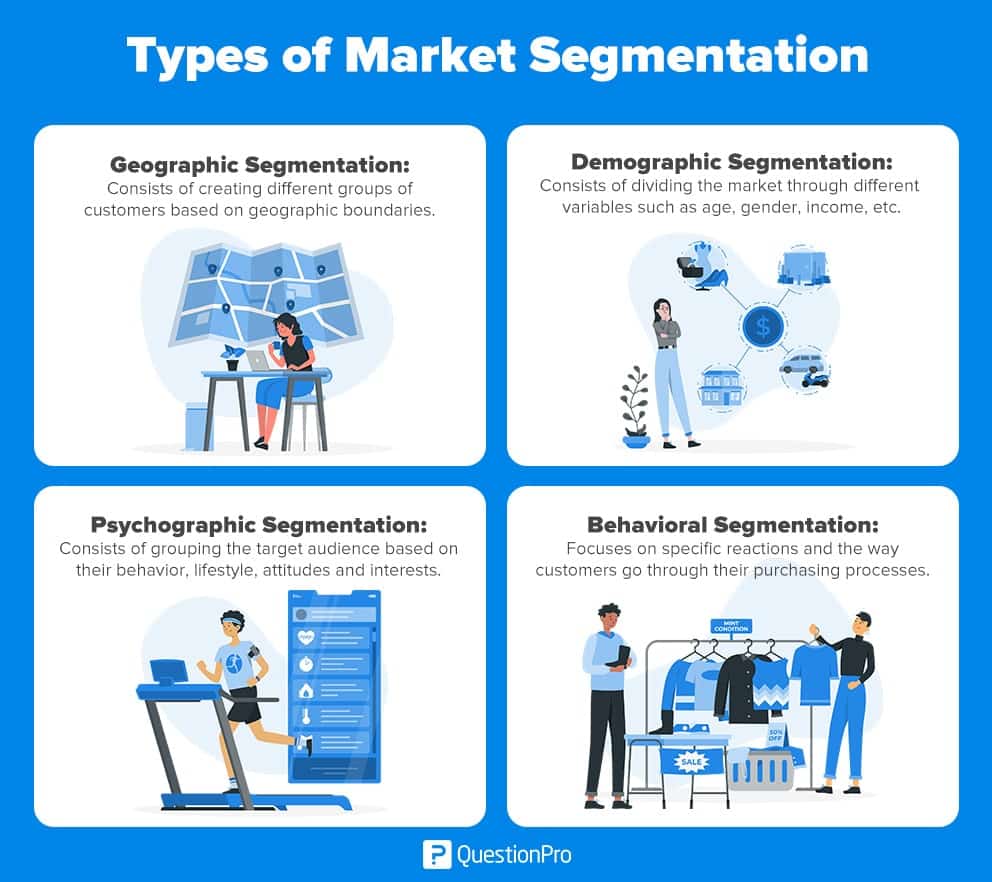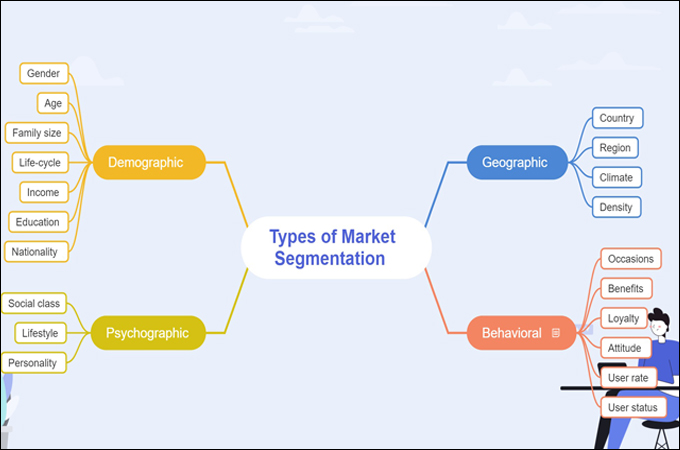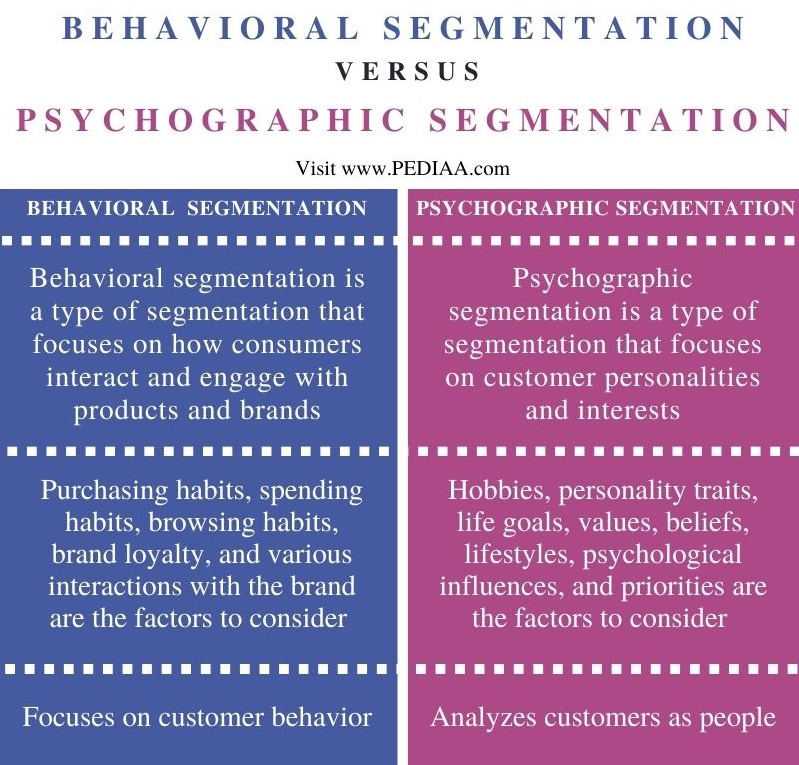Segmentation is the process of dividing a market into smaller groups of consumers with similar needs or characteristics. This allows businesses to tailor their marketing strategies and products to specific segments, rather than trying to appeal to the entire market. There are several different types of segmentation, which can be used separately or in combination to better understand and target specific groups of consumers.
One common type of segmentation is demographic segmentation, which divides the market based on characteristics such as age, gender, income, education level, and family size. Demographic segmentation can be useful for identifying differences in consumer behavior and purchasing habits within different age groups or income levels. For example, a business selling luxury cars might use demographic segmentation to target higher income consumers, while a business selling children's toys might focus on families with young children.
Geographic segmentation divides the market based on location, such as by country, region, or city. This type of segmentation can be useful for businesses that have a specific geographic focus or for those that need to consider regional differences in consumer behavior. For example, a business selling sunscreen might target markets in sunny, beach-adjacent regions, while a business selling winter coats might focus on colder climates.
Psychographic segmentation divides the market based on consumers' lifestyles, values, attitudes, and interests. This type of segmentation can be useful for identifying differences in consumer motivations and preferences, and can be especially useful for businesses selling products or services that are closely tied to consumers' lifestyles or values. For example, a business selling environmentally-friendly products might use psychographic segmentation to target consumers who prioritize sustainability, while a business selling luxury travel experiences might target consumers who value exclusivity and indulgence.
Behavioral segmentation divides the market based on consumers' attitudes and behaviors related to a product or service. This type of segmentation can be useful for understanding how consumers make purchasing decisions, and can help businesses develop targeted marketing campaigns. For example, a business selling gym memberships might use behavioral segmentation to target consumers who are already active and regularly participate in fitness activities, while a business selling home security systems might target consumers who are concerned about the safety and security of their homes.
Finally, hybrid segmentation combines two or more types of segmentation to create more detailed and nuanced groups of consumers. This can be particularly useful for businesses that need to consider multiple factors when targeting specific segments. For example, a business selling outdoor gear might use hybrid segmentation to target outdoor enthusiasts who are also high income earners, or a business selling vegan beauty products might use hybrid segmentation to target consumers who prioritize sustainability and animal welfare.
Overall, segmentation is a powerful tool for businesses to better understand and target specific groups of consumers. By using different types of segmentation, businesses can create targeted marketing campaigns and develop products and services that better meet the needs and preferences of specific segments of the market.
